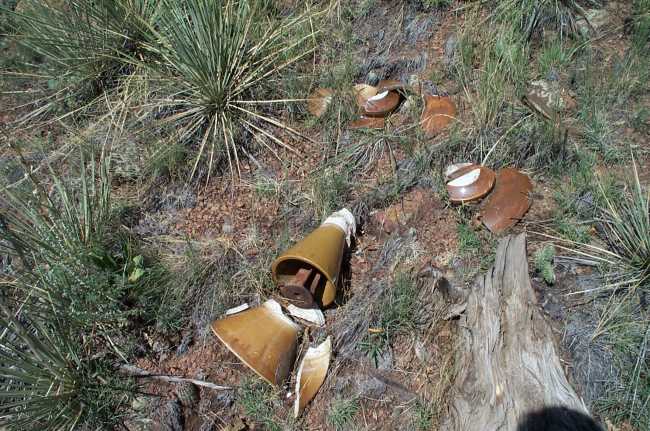
Hike to Skagway Powerhouse
Page 4

M-3710 parts and a mint base.
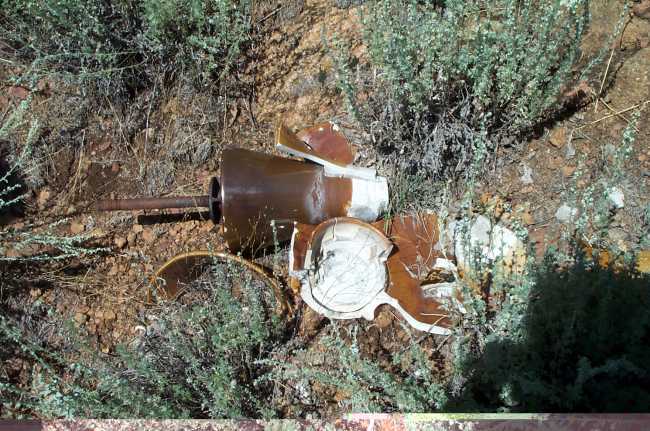
The rare M-3721B its base is still mint. Part of the top and lilyshell middle are also here.
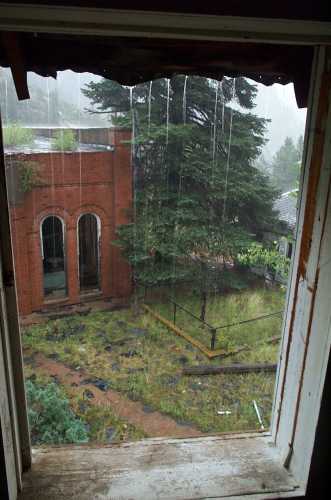
Our tour of the compound and Locke 25 line is now over! There is a lot of lightning and small hail coming down now. The temperature dropped 25 degrees an about 15 mints!! It was in the high 70's but it is now around 50!! When we saw the clouds gathering over us we headed back north to the plant buildings for shelter at a slow jog and just made it to dryness before it was to late!! The key to surviving a hike in this area is to make it to the powerhouse before about 2 pm. After that the weather is a crapshoot. It is east to see why these power lines had so many lightning caused failures. It's about 3:30 pm and we are looking out the window of the log cabin at the rain.
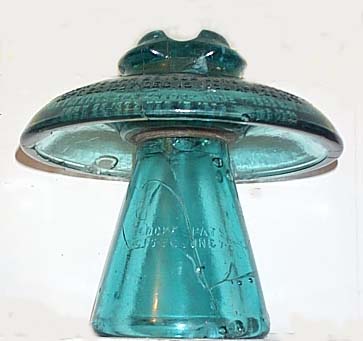
This is a really nice repaired example of this rare CD. Top skirt front embossed: LOCKE PATENTS APR,29, 1902 JUNE 7, 1898 NOV,2,1896 SEPT.28 1897 DEC,15 1896 APR,30 1891. Back of top embossed: No 25. Base skirt embossed: LOCKE'S PAT'S DEC 15-96 JUNE 7-98. The main platter was split in four quarters and the base was in four big parts. With an 11" diameter top. This is the largest early historic glass insulator ever used in North America and the only American cemented all glass multipart known to have been used on this continent. It was cataloged for maximum of 50,000 volt service. There was only one production run of these in late 1903. Soon after being put into service in Colorado near Pueblo, many began to crack and fail from lightning flashover and cement expansion. The design was a total engineering failure. All were removed and replaced around 1922. Note the large quarter sized flat air bubble in the top skirt! Many of these were found in the late 1960's and a few have surfaced in more recent years.
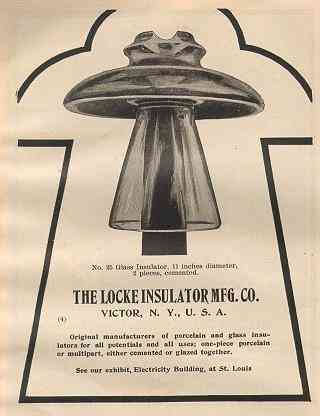
Here is an old advertisement for the Locke 25. I believe this dates from 1904.